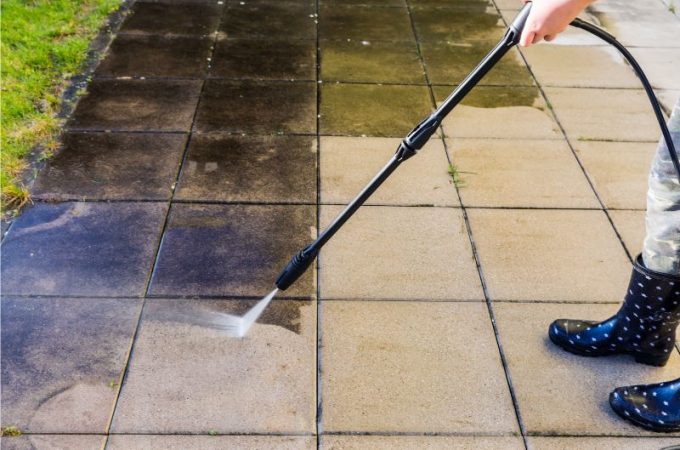How to Fix a Leaky Tap in Your Rental
A dripping tap might seem harmless at first—just a tick, tick, tick that’s somehow louder at 2 am than during the day. But left unfixed, it wastes water, hikes up bills, and slowly sends you into madness one drip at a time.
The good news? Most leaks are caused by simple wear and tear and are surprisingly easy to handle yourself.
A quick fix now saves money later. And there’s something satisfying about solving a small household issue with your own two hands. Here’s how to sort it out without turning the bathroom upside down.
Gather the Essentials Before You Begin
Before you dive under the sink, make sure everything you need is at arm’s reach. Trust us, crawling in and out repeatedly isn’t just annoying. It’s a full-body workout you didn’t sign up for.
You’ll need:
- An adjustable wrench. Pipes and taps come in all shapes and sizes. One size never fits all, so having an adjustable wrench saves you from wrestling a stubborn nut for half an hour.
- A screwdriver. Check whether your tap handle needs a Phillips or flathead. Having both on hand avoids that “oh, it’s the wrong one” moment halfway through.
- Replacement washers and O-rings. These little rubber rings are the usual culprits behind a drip that just won’t quit. Even if only one looks worn, it’s worth swapping them all for peace of mind.
- A torch or strong flashlight. The space under your sink is somehow darker than a cave at midnight. A decent light lets you see what you’re fiddling with and avoids accidental finger injuries.
- Optional but handy extras: A pair of needle-nose pliers, a small container for screws, and a clean cloth or old tea towel.
The pliers help grab stubborn washers, and the container keeps screws from escaping to another dimension. The towel prevents scratches or dents on shiny taps.
Take the worn washer or O-ring with you to the hardware store so you can match it exactly. This’ll save you from guesswork and unnecessary trips back and forth.
Before you start taking the tap apart, snap a quick photo of everything in place. When it comes time to put it back together, that picture will show you exactly where each piece belongs, avoiding a lot of head-scratching later.
Turn Off the Water First
Before you do anything else, shut off the water supply. Start by checking the small valves under the sink and turning them clockwise. If they’ve been ignored for years and feel stubborn, use pliers but gently. Crack a valve and you’ll have doubled your problems in one move.
If those little valves refuse to cooperate, track down the main shutoff. In most houses, it’s usually near the water meter. In flats, though, it might be tucked away in a hallway cupboard or a shared utility space.
Once the water is off, turn on the tap to drain any remaining drops. That way, you won’t get any unexpected sprays while you’re elbow-deep in fixing the tap.
Take the Tap Apart Carefully
Once the water is off and the tap has drained, it’s time to get hands-on. Grab your screwdriver, adjustable wrench, torch, and optional extras like pliers and a cloth. You’ll need them to navigate the tight space under the sink.
Start by removing the tap handle with the screwdriver. Beneath it, you’ll find screws, a stem, and the washer and O-rings you came to replace. Lay each piece out in order on a clean towel or plate to prevent them from rolling away or disappearing into the depths of your cabinet.
If you’re the forgetful type, snap a photo at each step—this will definitely help when you need to remember how everything fits back together.
Handle each part gently. Scratched stems, bent washers, or stripped threads don’t just make reassembly harder.
They could also lead to problems during your landlord’s inspection or while preparing for professional after-lease cleaning. Treat everything like it’s made of thin glass, and it’ll go much more smoothly.
Use your pliers gently for tight fittings, and let the cloth protect any shiny surfaces from accidental scratches. Once that is done, it’s now time to check each component, which we’ll cover in the next section.
Check for Wear and Tear
Now that the tap is disassembled, it’s time to put your detective hat on and inspect the washers, O-rings, and seals.
Take a close look at the washers and O-rings once they’re out. Check for cracks, brittleness, or flattening. These small components are usually the culprits behind persistent drips.
Even if one looks okay, it’s often best to replace all of them at once, especially since you’ve already made it this far.
Here’s what you should be looking for:
- Cracks;
- Flattened or stretched shapes;
- Brittle texture;
- Anything that looks like it’s been doing the job for a century.
Even a single worn-out washer can cause a surprisingly persistent drip, so if any part looks tired, go ahead and replace it. There’s no need to overthink it.
Fit the Replacement Parts
With the old components out and inspected, it’s time to swap in the new ones. Make sure each washer and O-ring matches the original exactly. Getting the right size is crucial, and ‘close enough’ simply won’t stop leaks.
Opt for good-quality parts rather than the cheapest option on the shelf. Spending a few extra dollars now can save you from surprise drips later.
If you’re uncertain about a match, don’t hesitate to take the parts back to the hardware store for advice. They deal with these problems every day and can help you get it right the first time.
Put the Tap Back Together
Now that the new washers and O-rings are in place, it’s time to reassemble the tap. Work in the exact reverse order of how you took it apart. This is where those photos you snapped earlier really come in handy.
Tighten each piece firmly, but don’t go overboard; overtightening can crack the tap housing or strip the threads. Once everything is back in place, turn the water supply on slowly and test the tap.
If it flows smoothly and shuts off cleanly, congratulations! You’ve stopped the drip, saved yourself a call to the landlord, and regained the quiet of your bathroom at 2 a.m. It’s a small fix, but it makes a big difference.
Conclusion
Fixing a leaky tap isn’t a grand home renovation moment. It’s simple, but quite effective. It saves water, prevents damage, and makes your rental feel less like a temporary stop and more like a space you can control.
No more drips, no more wasted water—just a tap that works the way it should.





